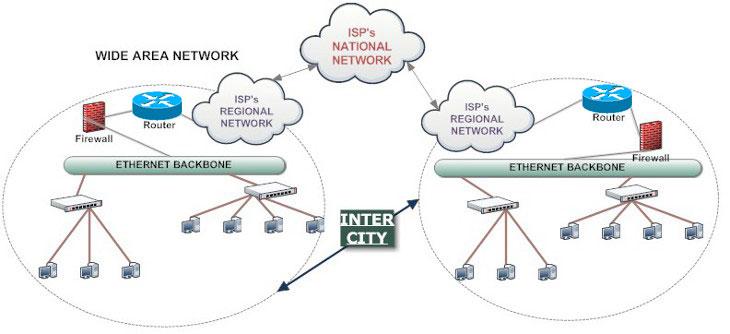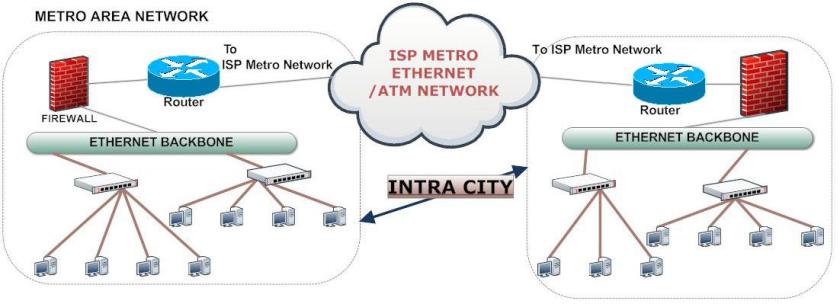- A WAN (Wide Area Network) is a network spanning a large distance or broad area (e.g. across metros, cities, countries, continents)
A sample WAN layout is given below:

- Typically, any network hop that is larger than 10 km is classified as a WAN, but this distance is not very strictly adhered to.
- Even the last mile link that connects a home network to a local ISP (Internet Service Provider) is considered as a WAN link.
- A WAN connects multiple networks ( LANs/MANs, CANs) spread across long distances together
- A WAN link is a wired or wireless telecommunication link that has the capability to carry data over long distances.
- It is usually not owned by a single administrative domain.
- Due to the distance factor, data transfer rates are lower and delays higher for a WAN, when compared to LAN
- Internet is the largest WAN, spanning the world, connecting all the public data networks.
- A WAN network may either be a point-to-point link, connecting two remote networks, or it may be a switched WAN network, involving multiple WAN switches connecting multiple networks.
- DSL, cable, SONET, T1/E1, Wi-Max are examples of point-to-point WAN network.
- X.25, Frame Relay, ATM, MPLS are examples of Switched WAN networks.
